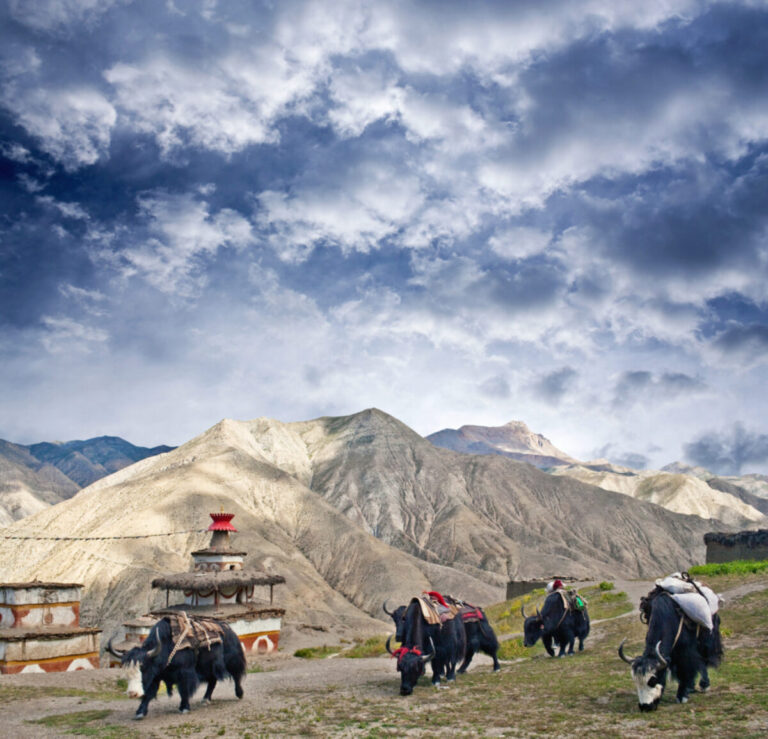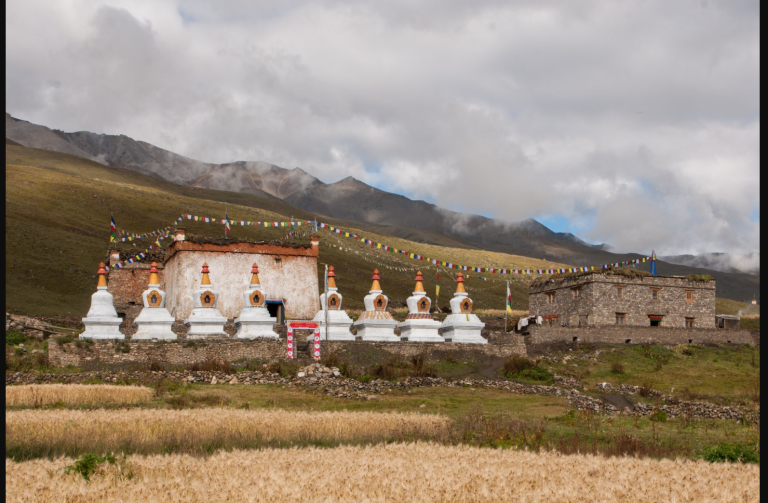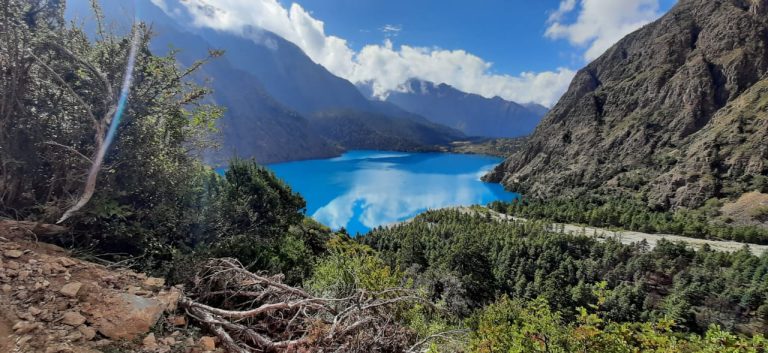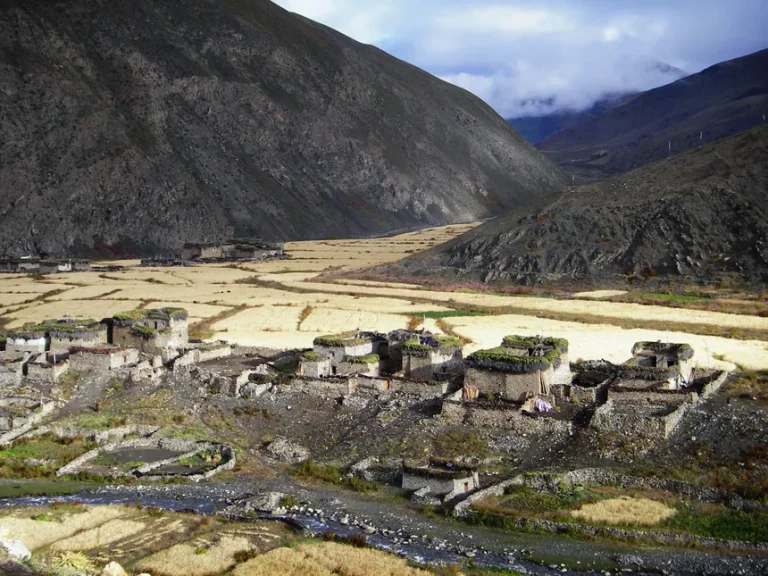A land of myths and mysteries, Upper Dolpo is one of Nepal’s most remote and pristine trekking regions. Known for its breathtaking landscapes, rich Bonpo and Tibetan Buddhist culture, and challenging trekking routes, this region offers an experience unlike any other.
History & Significance
Upper Dolpo has a rich history dating back over a thousand years. Historically, it was an important trade route between Tibet and Nepal, where traders exchanged salt, wool, and barley. The region has been home to the Dolpo-pa (people of Dolpa), who follow a unique blend of Tibetan Buddhism and Bonpo religion.
The area was once part of the ancient Zhangzhung Kingdom, which heavily influenced Tibetan culture and religion. Many of the monasteries in Dolpa date back to the 11th century, making it a living museum of Himalayan history.
Upper Dolpo is a sacred land for Buddhists and Bonpo followers. Some key spiritual sites include:
✔️ Shey Gompa (Shey Monastery) – The heart of Dolpa’s spiritual life, founded in 11th century, located near Crystal Mountain, which is considered sacred by locals.
✔️ Crystal Mountain Pilgrimage – Pilgrims circumambulate the mountain to cleanse sins, similar to Mt. Kailash in Tibet.
✔️ Bonpo Influence – Dolpa is one of the last remaining places where the Bon religion, Tibet’s pre-Buddhist faith, is actively practiced.
The isolation of Dolpa has helped preserve its ancient culture and traditions, making it one of the most authentic Tibetan cultural regions in Nepal.
Even today, Upper Dolpa remains one of the most remote and least explored regions of Nepal. Due to its harsh terrain, high altitude, and lack of modern infrastructure, only a few hundred trekkers visit each year. The region gained international recognition after Eric Valli’s 1999 film “Himalaya”, which showcased the challenges of the Dolpo-pa people.
Despite its remoteness, Upper Dolpa continues to fascinate adventurers, scholars, and spiritual seekers, offering an unparalleled journey into the past.
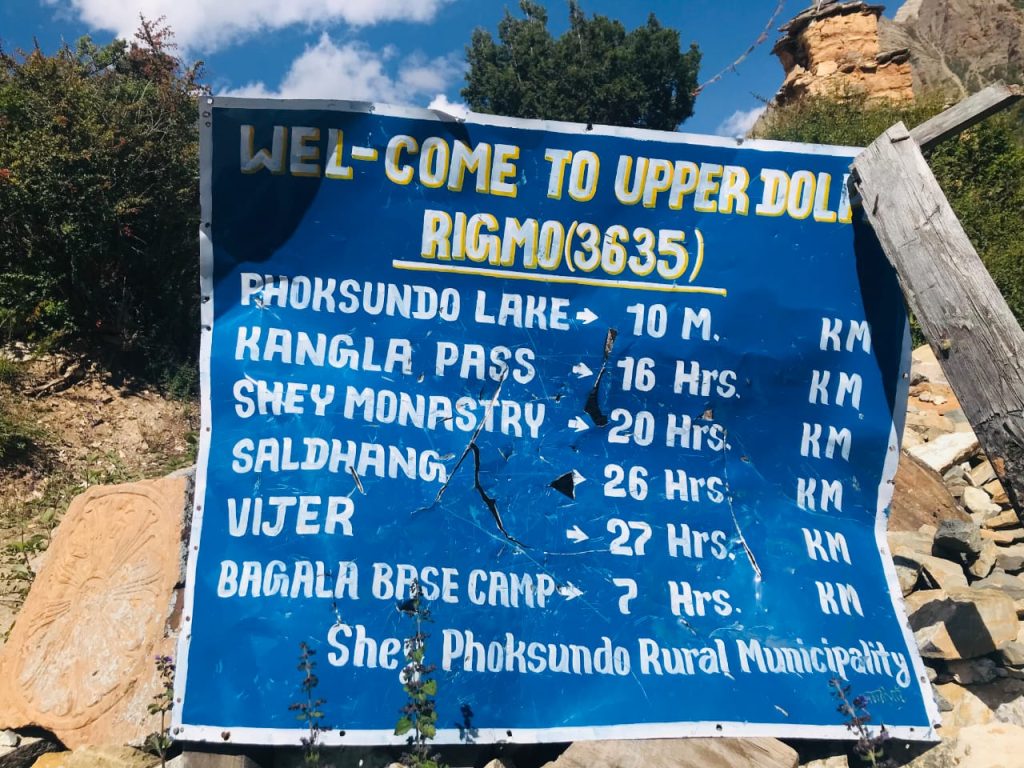
map upper dolpo
🏞️ Highlights of Upper Dolpo
📍 How to Reach Upper Dolpa?
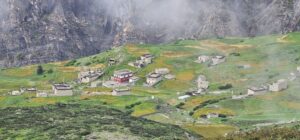

- By Air + Trekking
- By Road + Trekking
- Fly from Kathmandu to Nepalgunj (50 min)
- Fly from Nepalgunj to Jufal (45 min)
- Trek from Jufal to Shey Phoksundo Lake and further into Upper Dolpa
- Kathmandu → Nepalgunj → Surkhet → Jajarkot → Dunai (Jeeps available)
- Trek from Dunai to Upper Dolpa (Requires multiple days)
Upper Dolpo Trekking Experience – A Visual Journey by Nicholas Eager
This beautifully filmed video by Nicholas Eager takes you on a tranquil and awe-inspiring journey through Upper Dolpo one of the most remote and culturally rich regions of Nepal. Experience the stark beauty, Tibetan influence, and untouched trails of this hidden gem
Kathmandu to Nepalgunj: Catch a 1-hour flight.
Nepalgunj to Juphal: A scenic 35-minute flight into the heart of Dolpo.
Juphal: Your trek kicks off here.
Note: Flights are weather-dependent; delays are common
Kathmandu ➡️ Jajarkot ➡️ Dunai
Long, rugged ride (multiple days)
Expect landslides, river crossings, wild camp spots
Only attempt with off-road bikes and solid prep
Dunai ➡️ Trek to Upper Dolpo
From here, bikes can’t go further — it’s all on foot
The real magic starts: ancient villages, Shey Gompa, hidden valleys
Kathmandu ➡️ Jajarkot ➡️ Dunai
Long, rugged ride (multiple days)
Expect landslides, river crossings, wild camp spots
Only attempt with off-road bikes and solid prep
Dunai ➡️ Trek to Upper Dolpo
From here, bikes can’t go further — it’s all on foot
The real magic starts: ancient villages, Shey Gompa, hidden valleys
🌤️ Best Time to Visit Upper Dolpa
✔️ Spring (April – June): Best weather, lush landscapes
✔️ Autumn (September – November): Clear skies, best visibility
❌ Monsoon (July – August): Heavy rain, landslides, difficult travel
❌ Winter (December – February): Extreme cold, heavy snowfall
Nearby Attractions
🎟️ Permits, Entry Fees & Trekking Guide for Upper Dolpa
🔹 Cost: USD $500 per person for the first 10 days
🔹 Each additional day: USD $50 per person per day
🔹 Where to get it? Department of Immigration, Kathmandu
🔹 Why is it required? Upper Dolpa is a restricted area, so foreign travelers must obtain a special permit.
🔹 For Foreigners: 3,000 NPR + 13% VAT = 3,390 NPR (~USD $34)
🔹 For SAARC Nationals: 1,500 NPR
🔹 For Nepali Citizens: 100 NPR
🔹 Where to get it? Nepal Tourism Board, Kathmandu OR Park Entry Gate
🔹 Difficulty Level: Strenuous (High altitude, remote terrain, multiple passes over 5,000m)
🔹 Highest Altitude: Kang La Pass (5,151m)
🔹 Experience Required: Suitable for experienced trekkers due to tough climbs and isolation.
🔹 Weather Challenges: Best in Spring (April-June) & Autumn (Sept-Nov). Winter is extremely harsh.
✅ Upper Dolpa Circuit Trek (22–27 days) – Covers Shey Phoksundo Lake, Shey Gompa, and remote Dolpo villages.
✅ Lower Dolpa Trek (15–18 days) – Easier trek, includes Dho Tarap village and Phoksundo Lake.
✅ Upper Dolpa to Mustang Trek (28+ days) – Advanced trek crossing into Mustang, rarely traveled.
Address
Shey Phoksundo National park
Dolpa District, Nepal


